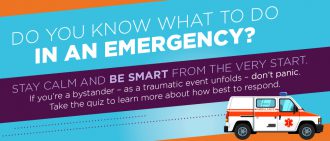Vaping has exploded in popularity in recent years. Are e-cigarettes the culprit behind hundreds of cases of respiratory disease?
Is the light from your smartphone screen blurring your vision? Do childhood vaccines really contain toxic chemicals?
It’s not easy to decipher medical fact from fiction—but we offer health information made simple. Join our UPMC HealthBeat newsletter list to receive reliable, easy-to-understand medical information, curated and reviewed by the experts at UPMC. Discover hundreds of health and wellness topics for every age and lifestyle.
Because the more you know, the healthier you live. Subscribe today.
-
Is Vaping Making People Sick?
Although electronic cigarettes have been available in the U.S. market since 2007, use of them has exploded in recent years, even as traditional cigarette use decreased. The Centers for Disease Control and Prevention recorded over 200 cases of severe respiratory disease in the U.S. linked to vaping,Read More
-
Quiz: What Is Too Much Blue Light?
Lately, it seems like blue light is one of the hottest health concerns. Warnings abound about its potential dangers, whether the light comes from your smartphone or laptop. But is there such thing as too much blue light? What should you know about blue light eye damage?Start Quiz
-
Is Guacamole Healthy? Facts on Your Favorite Snack
Guacamole is a “go-to” dip at get-togethers, game-day parties, or casual family gatherings. But is guacamole healthy? Good news: When eaten in moderation, guacamole does have some health benefits.Read More
-
Quiz: Do You Know How to React in an Emergency?
If you’re a bystander as a traumatic event unfolds, it’s easy to panic. Take the quiz to learn more about how to respond.Start Quiz
-
Learn About the Stress Hormone: Cortisol
Stress causes the body to produce an abundance of cortisol, which can slow some bodily functions. Stress may adversely affect a person’s immune system, digestive system, or reproductive system.Read More
-
An Unorthodox Summer Camp for Kids Is All Heart
Keith McIntire isn’t supposed to be alive. He’s a miracle. He’s also adamant that this story isn’t about him. “When I was diagnosed in the early 60s, my parents were sent home with me and the doctors said, ‘just take him home and love him, there’s nothing we can do at this time.’Watch Now
-
Strength Training and Weight Loss: Why Cardio Isn’t Enough
If you want to work out to lose weight, you might be considering spin classes or jogging on the treadmill. And while those cardio workouts are essential for burning calories and building endurance, it’s also important to include muscle-strengthening in your routine. Strength training and weight loss are closely linked.Read More
-
Vaccine Myths and Facts: Here Are the Top Reasons to Have Your Child Vaccinated
Vaccines are shots administered during childhood and beyond, sometimes at intervals. As the arguments over child vaccines continue, it’s important to understand the evidence. Here is an overview of vaccines and key reasons you should vaccinate your child.Watch Now
-
UPMC Immune Transplant and Therapy Center: What Is Immune Transplant?
“In a short period of time, transplantation has gone from being an experimental procedure to being the standard of care for patients with end-stage organ disease. For many patients, it is now the main treatment method and, in some cases, it is the only method,” says Abhinav Humar, MD, chief of transplantation at UPMC.Read More
-
How to Recognize the Signs of Opioid Abuse
According to the Centers for Disease Control and Prevention, deaths in the United States from prescription opioids, such as oxycodone, hydrocodone, and methadone, have quintupled since 1999. From 1999 to 2016 there were over 200,000 deaths from drug overdoses.Read More
-
10 Yoga Poses for Heart Health
Yoga improves heart health by increasing circulation and blood flow. In addition, practicing yoga can help lower blood pressure, cholesterol, and blood glucose levels, as well as the heart rate — which can all add up to a lower risk of hypertension, stroke, and heart disease.Read More
-
Skin Cancer Quiz: Can You Tell Melanoma Facts From Myths?
Each year, an estimated 76,000 Americans are diagnosed with melanoma, a type of cancer that usually originates in skin cells. Do you think you can tell melanoma facts from fiction? Test your knowledge with our skin cancer quiz.Start Quiz












